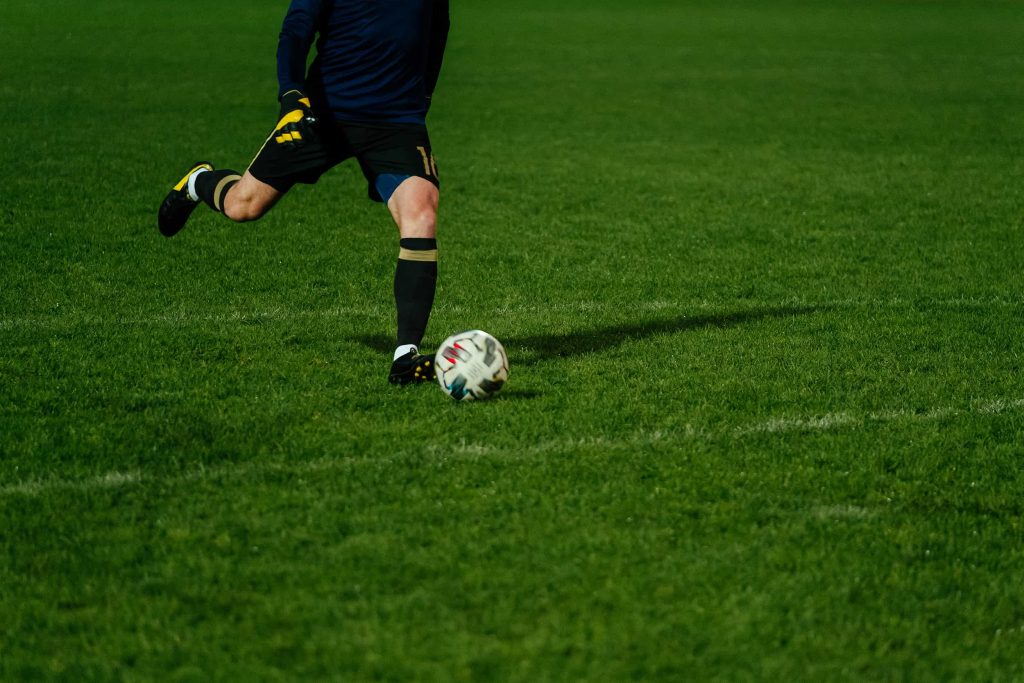Borussia Dortmund faced Bayer Leverkusen at the BayArena last Saturday(29/09) in a highly anticipated Bundesliga match. Heiko Herrlich’s side were in 11th place while Lucien Favre and Dortmund sat pretty in 2nd place, looking to prolong the pressure on leaders Bayern Munich. The visitors had just beaten Nuremberg 7-0 and statistically, the goals were due to keep on coming, going into the Leverkusen fixture.
The match was a frenzied feast of attacking that ended in a 4-2 win for Dortmund. Leverkusen put in a brilliant first-half performance and deservedly went 2-0 up before half-time. Unfortunately, their high-intensity attacking game couldn’t last for a full 90 minutes especially against Dortmund’s (mostly) controlled attacking in possession. Dortmund used their controlled attacking and the chances they gained from counter-attacks to get back in the game, equalise and eventually win the game. The win saw Dortmund take pole position on the Bundesliga table, capping off what had been a fine week in which they scored 11 goals and conceded only 2 in two games.
Leverkusen’s Counter-Pressing Approach
Heiko Herrlich set his side up to disturb Borussia Dortmund’s build-up play, regain possession and attack directly at speed. This was a fairly solid approach in the first half as they had lots of energy and Dortmund looked shaky on the ball. Right from the off, they forced Dortmund’s centre-backs to carry the ball out wide before pressing and turning over play. They used a space-oriented pressing system, which focused on closing down space around the ball and blocking passing lanes to limit the ball carriers options. After Leverkusen had forced Dortmund’s centre-backs out wide, they would close the channels into Delaney or Witsel, who both played as holding midfielders. Leverkusen’s pressing was very timeous and really intense and they made it really hard for Dortmund to settle on the ball, establish possession higher up the field and progress. Counter-attacking opportunities were also limited for Dortmund early in the first half as Leverkusen were well organised and transitioned from all phases of the game really smoothly because of their positional awareness. Dortmund were also reluctant to play back to Burki because it would trigger Leverkusen’s press and they didn’t want to put themselves under immense pressure for no good reason. Even if they used his long passing to bypass the high pressure, Leverkusen were better prepared to win 2nd balls or counter-press and regain possession. Plus they have the personnel for it, while Dortmund’s have no physically tall/strong players to hold up play.
In the 8th minute, Mitchell Weiser opened the scoring for Leverkusen, ending a brilliant move that perfectly displayed how Leverkusen set themselves up to create chances. They forced Akanji into a narrow corridor on the right flank, forcing him to play a risky pass through Leverkusen’s pressing trap. Predictably, the pass was unsuccessful and Leverkusen broke forward quickly. Abdou Diallo and Achraf Hakimi slipped while defending the attack, and their mistake just allowed to move further forward. A cross that was missed by all the defenders, fell in the path of Weiser, outside of the box, and he smashed home a wonderful goal. 1-0 Leverkusen.


Leverkusen’s pressing traps were well executed but Dortmund weren’t doing enough to retain possession and escape the traps they were drawn into. Dominik Kohr, Julian Brandt, Kai Havertz did well to support Kevin Volland and Lucas Alario whilst the front two were pressing. However, that usually meant that the space on either side of Lars Bender was usually a good place to take advantage of. If they could resist, Leverkusen’s intensity…
Borussia Dortmund’s Strategy In Possession
After Weiser’s goal, Dortmund’s players finally managed to settle in the game by executing passing and moving patterns much better. Leverkusen’s base pressing formation was a 4-4-2, while Dortmund played in a 4-2-3-1 shape. Dortmund’s approach in possession was to create space in behind Leverkusen’s midfield line and attack that space to create goalscoring chances. Early in the game, this was hard to do because of Leverkusen’s aforementioned pressing traps and Dortmund’s poor passing and movement to create space. When Dortmund began playing sharp passes in and out of Leverkusen’s block using third man movements, Leverkusen began losing access to the ball and were forced to retreat in order to defend crucial areas. Leverkusen were very compact whilst pressing and if they lost access to the ball and allowed Dortmund to switch play, they would be exposed on their far side. Thus Dortmund forced them into a mid-block structure which eased the pressure on Akanji and Zagadou, allowing them to play the ball into Witsel and Delaney to dictate play.
Leverkusen weren’t fully passive in their mid-block structure. They just waited patiently for an opportunity to press one of Dortmund’s deep-lying players and regain possession. However, they were set up in a flat 4-4-2 and they were poorly staggered. So when one of their central or wide midfielders stepped forward to close down a player, space opened up in-behind them. From there, Dortmund looked to play sharp laser passes into the feet of Pulisic, Reus and Larsen, who would then turn and attack. Witsel was great at supporting play and ‘bouncing’ into midfield back out, in order to manipulate the positioning of Leverkusen’s forwards.
Dortmund did not, however, take any of their chances and lacked quality in their combinations up front. As the first half wore on, Dortmund became more predictable, Pulisic’s 1 shot which threatened Leverkusen was his only contribution and Delaney became a liability in possession. His abilities to act as a distributor (rather than just a destroyer) are limited, and he can’t play in advanced positions. Witsel as the lone deep-lying playmaker was therefore limited too.
Leverkusen’s Approach In Possession:
Leverkusen were quite good on the ball when they had established possession and they mixed this with their counter-pressing approach to great effect. During the build-up they could, they could play long passes into the front as press/win the 2nd ball or they could be more patient, create space and progress upfield. Dortmund also pressed high (although never all the way to the keeper) in a 4-4-2 shape, with Reus pushing up to press the two Leverkusen centre-backs. Leverkusen would create a 2-1 triangle with Lars Bender just behind the two forwards, which forced them to stay narrow and avoid a direct ball into Bender. Weiser and Wendell would position themselves wide on the touchline, to make themselves available for passes from their centre-backs. Kohr who was a holding midfielder, positioned himself very high, but he would drop deep into space along with Brandt or Volland(on the opposite flank) to create support for a pass from the backline/fullbacks. When they dropped deep, this would consequentially draw a Dortmund player forward too, creating space in-behind. This approach had mixed results, but it was further forward where there attacking patterns worked effectively.
Once upfield, Weiser and Wendel would push as far up as possible to provide width, while Kohr, Brandt, Voller and Havertz, would position themselves in-field, creating combinations and drawing Dortmund to one flank, freeing up space on the other. If space opened up on the far side, they would switch play for their far side teammates to combine and take a shot or create a chance from a cross from wide, where Wendell and Weiser were positioned. In the 38th minute after winning the 2nd ball from a long pass by Hradecky, they did just that. Established possession high up the field, used the far side to progress play and create a combination. It resulted in a corner kick, which they duly scored from through Wendell. Leverkusen went into half-time after a solid first half performance, the much happier of the two sides. Favre needed to provide a solution.
2nd Half: End To End Football:
The first 20 minutes of the second half, was highly entertaining with Leverkusen continuing their high-intensity game and Dortmund searching for a goal to get back in the game. Mahmoud Dahoud came on for Thomas Delaney to give the visitors more creativity in possession. Dahoud would be key to helping Witsel in midfield, dictate the flow of the game later on in the second half. But early on, Leverkusen pressed at full throttle and attacked with great speed too. They had 2 shots brilliantly saved by Burki, while Volland hit the post at the end of an exhilarating break forward. Borussia Dortmund’s game at this stage of the season lacks the quality in the build-up phase that we see from teams like Real Betis, Napoli, Bayern etc. This means that no matter how many opportunities they create, they miss out on the chance to create defensive stability in the event that they lose the ball. Time and again, Leverkusen were able to pick up the ball in midfield and break forward, luckily they only threatened them at worst. Leverkusen were unable to convert their chances. Leverkusen weren’t so solid either, leaving huge gaps in their midfield, which Dortmund used to create several opportunities themselves. They couldn’t score either, with Hradecky saving a brilliant Bruun Larsen shot to maintain a 2-0 lead for Leverkusen on the scoreboard.
Dortmund Blitz The Hosts As Leverkusen Run Out Of Steam:
In the 64th minute, Bruun Larsen scored Dortmund’s first goal, after reacting quickly to rebound off of Marco Reus’ shot. The move began when Dortmund were allowed to break forward, without any pressure, after Leverkusen lost the ball during a break of their own. They weren’t ready to counter-press and this was the first sign of their fatigue. Witsel broke forward with the ball, leading an attack which ended in a cross by Diallo, which was eventually headed away. Leverkusen, however, reacted incredibly slowly allowing, Dortmund to maintain possession, switch play to Hakimi before the Moroccan played a beautiful pass into Marco Reus. Reus’ volley was parried into the path of Bruun Larsen and Dortmund were back in the game.
With Paco Alcacer having already replaced Max Phillip, Jadon Sancho came on to replace Pulisic who had a below-par game (ineffective on the dribble, on the day). Almost immediately Sancho had an impact. Leverkusen broke forward in the 67th minute after regaining possession deep in their own half. Remember the defensive instability I mentioned? Well, Dortmund lost the ball again despite being in a good position due to their bad rotations and poor connections. Dahoud was dispossessed and were it not for a soft header by Havertz, Dortmund might’ve been 3-1 down. Instead, Dortmund broke forward via Jadon Sancho who combined brilliantly with Reus, setting up the German for the equalizer.
After the goal, Lars Alario and Weiser went off for Leon Bailey and Tin Jedvaj. The pace of the game slowed down and the mood went from exciting and frenzied to intriguing and nerve-wracking. Borussia Dortmund began to circulate the ball more patiently with the hope of creating a goalscoring chance, while simultaneously while making sure they didn’t give up the ball cheaply for a Leverkusen counter-attack. Julian Brandt was taken off in the 78th minute for Paulinho, giving them fresh legs, while they dropped deep and established themselves in a low-block. Dortmund continued to press high out of possession but would drop into their mid-block when Leverkusen established themselves in possession in midfield. This worked well because they could easily re-press Dortmund and recycle possession high up the field instead of having to play out from the back. This approached reaped rewards when Paco Alcacer gave them the lead in the 83rd minute. They regained possession from a counter-press at the halfway line and were already positioned and prepared to attack. After patiently circulating the ball yet again, inside Leverkusen’s half, they created space for Hakimi to cross the ball into the corridor of uncertainty, which Paco latched onto, making the score 3-2 in favour of Dortmund.
Leverkusen, now desperate to get back in the game, got players forward and established possession in Dortmund’s half. They really piled on the pressure for Dortmund who managed to resist their wave of attacks. When Leverkusen got a corner in the 90th minute, Hradecky came up from his own goal. Dortmund managed to clear the corner and when Sancho received the ball, he played a long pass for Paco to latch onto before the Spaniard scored in front of an open goal. 4-2 Dortmund and game over for Leverkusen.
Conclusion:
This game was highly entertaining and tactically very interesting too. Leverkusen’s organization and intensity in the first half paid off, and it was unfortunate, Delany and Pulisic were off form as Dortmund could’ve created more chances. The frenzied beginning to the second half saw both teams miss several, high-quality goalscoring opportunities, but it was Leverkusen who were left to rue their missed chances. The introduction of Sancho, Alcacer and Dahoud added quality to Dortmund’s side in the first half and they all played their part in the attack. Dortmund score through controlled possession and exploited Leverkusen’s disorganization(caused by fatigue) to score 4 brilliant goals and win the game. What a game!



